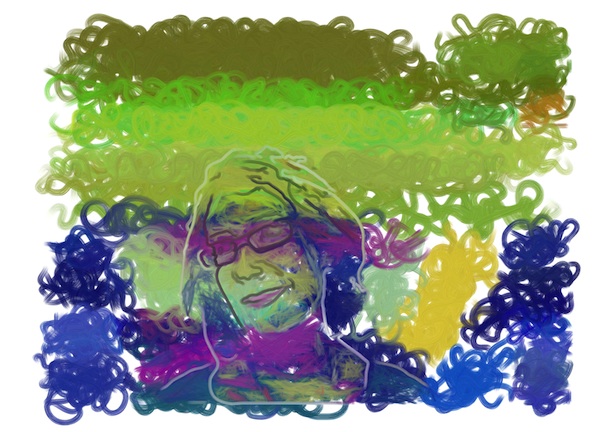The
Painting Fool, a computer program, can create portraits based on its
mood, assess its work and learn from its mistakes. All photographs
courtesy Simon Colton
This past July, at the Galerie Oberkampf in Paris, visitors to the “You Can’t Know My Mind” exhibition were confronted with a laptop and an empty chair.
If they chose, they could sit down and have their portrait painted. The catch, though, was that it’d be planned and executed entirely by an artificial intelligence program called The Painting Fool.
“I’m interested in the idea that software itself can be creative,” says Simon Colton, the British computer scientist behind the program. “I want to drag software into new territory—by getting it to write music, or compose poems or paint pictures in a creative way.”The Painting Fool was created in 2001, when Colton, who was then working on a dissertation involving artificial intelligence, became obsessed with using photoshop to alter his photography. “I realized photoshop wasn’t doing what I wanted it to do, and I started programming, trying to get the graphics to work how I wanted,” he says. “Eventually, I realized I could bring this computer graphics work into the fold of computational creativity.”
In the years since, his software has created thousands of paintings and graphics, and he’s continually improved the algorithm to come ever-closer to meeting what he sees as seven key criteria for creativity: skill, appreciation, imagination, learning, intentionality, reflection and invention....MUCH MORE


